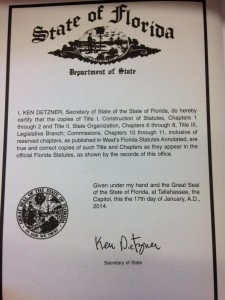New Project
In case you missed the news, Gentle Reader, I finalized my report on my Census of State Legal Information and released it last week. That was a big relief and I think the things I was able to discern from the data was useful information. I hope anyway. My great hope for it is that the people that have the ability to make decisions about how to publish legal information can use it to make better decisions.
Now on to a new project!
As you may know, I was going to write a book about Access to Law. After thinking about it and starting to do the research for it, I realized that I don’t quite have it in me to do. Plus, even if I did have the mental acuity to do the research and sit down and write, I don’t think I could do it (or at least a decent attempt at it) in the remaining time allotted. Kind of sucks, but dem’s the breaks.
Fortunately I have no dearth of things to do. Even in the middle of the state legal info census, I was bothered by the niggling question of “who cares?” That little voice became louder the more I finished up the report. So I have decided to try and answer that question through my second research project, which is a citation analysis of state supreme court decisions.
Here’s the plan: I’ve created a list of the 10 most recent state supreme court decisions from every state. Slightly harder than one might think, since there are a lot of “decisions” out there that are not written opinions. Of these 500 cases, I’m going through the Table of Authorities for each and seeing how many of the cases cited are available via either Free or State websites.
I hope to get an idea of the following three things:
- Whether the “lifespan of a case is about 20 years” found for US Supreme Court opinions holds true on the state level.
- If someone (i.e. a citizen) reading a state supreme court opinion would have access to the cases cited to read in order to better understand the law that governs them.
- To see if the resources needed to be a participant in the state court system are available for free or must pay law be used.
So that’s generally my spring semester, although I do plan on still messing around with some random acts of free law, investigations of legal tech and other things that catch my attention. I feel a lot less stressed this semester about ‘trying to prove my value’ and getting the most out of the year. It’s definitely a marathon, not a sprint.
